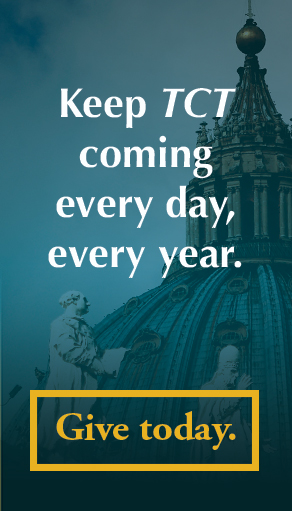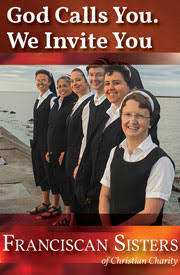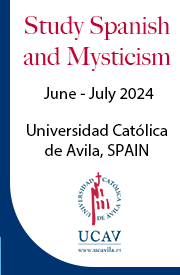The Catholic “Thing” is made up of a lot of smaller things. And the whole is immeasurably greater than the sum of its parts. Indeed, entire religions have grown out of one or more of those parts: Puritanism from asceticism, hedonism out of pleasure in created things, scientism from our God-given dominion over the earth, a kind of environmental paganism from stewardship of Creation.
We can’t do without the whole “Thing.” Without its power to keep the other things in their proper places, they quickly become deceptive substitutes. All truth is powerful, which is why there are always many people, stirred by some truth, who think they’ve found the whole thing.
That even happened within the Church over the past half century. My parish is a case in point. We have three highly intelligent and holy priests, and a solid and growing congregation. But the church building is one of those theaters-in-the-round so beloved in the 1960s, when it was built.
Catholics in those days had a strong grip on one of the partial “things”: newer churches – reflecting the Vatican Council – were supposed to encourage a loving, face-to-face community with Christ at its center. That was, to be sure, one part of Catholicity throughout the ages.
The problem was that many other things were left out. The baptismal font in my parish is stuck in a tiny vestibule, like an afterthought – which makes it impossible to gather a large family at the very entry of a newborn into the life of Faith.
There is no aisle for a bride to walk down at her wedding. No good place in the circular altar space to position the casket for a funeral. A fair number of seats in the pews force you to crane your neck – if you want to look at the priest during the homily.
In short, the buildings from those days – like the Church in general – seemed to focus on a few Catholic things, but to have lost the full range of the Catholic Thing.
There’s a parable in all this, too obvious to belabor. But a sign of hope: the current pastor, a dynamic young priest, is about to build a beautiful new church in a modern/Romanesque style well adapted to all the different things a church must be able to do for its people through all the different stages of life.
In our own way, here at The Catholic Thing, we have been busy since 2008 in a similar spirit. It was exactly five years ago yesterday that we posted my inaugural reflections on what we believed and were going to do. I said in the very first sentence and believe even more strongly today: “The Catholic thing – the concrete historical reality of Catholicism – is the richest cultural tradition in the world.”
All of us who gathered to start this page – the late Ralph McInerny, Michael Novak, Hadley Arkes, George Marlin, Austin Ruse, and others – were aware of the tendency, especially in America, to think of the Catholic Church as merely a set of policies that could be changed to “move with the times,” much like the way the American Constitution is now distorted to mean the opposite of what it says in many places, by regarding it as a “living” document.

We had in mind Belloc’s letter to Chesterton shortly after the latter’s conversion:
I am by all my nature of mind skeptical, by all my nature of body exceedingly sensual. So sensual that the virtues restrictive of sense are but phrases to me. But I accept these phrases as true and act upon them as well as a struggling man can. And as to the doubt of the soul, I discover it to be false: a mood: not a conclusion. My conclusion – and that of all men who have ever once seen it – is the Faith. Corporate, organised, a personality, teaching. A thing, not a theory. It.
A thing not a theory! That was the Catholic Thing we would propose to the world – but also to other Catholics. Not one idea among many others, but a truly living reality that has survived the rise and fall of cultures and whole civilizations, and will no doubt outlast our own.
We knew that even most Catholics – given the chaos in Catholic teaching that followed the Second Vatican Council – understand this as little as non-Catholics.
You can read, even in some of the comments over the years on this site, that we or the bishops or pope arrogantly claim to “speak for God” – an effective way in our culture to shut people up. But speaking only for myself – the hierarchy is quite able to take care of itself – we never make any such claim.
Like all real Catholics, though, we believe that God chose to reveal Himself and His plans for the human race in ways that ordinary human beings can grasp. In defending those truths, we aren’t speaking for God, but we aren’t going to let others deny what He actually said either – all the things He said.
And – though we sometimes disagree about exactly how even among ourselves – we believe that what He said must find its proper place in a world that understands more and more about things, but not the Thing.
If we were measuring ourselves by secular standards, we could claim to have done pretty well over these five years. Our readership is larger than ever, our columns are regularly translated into several foreign languages, and – something I personally take to heart – many people tell us TCT speaks to them more than anything else in the vast reaches of the Internet.
But we don’t use merely secular standards here. Our new pope has boldly taken a name rich in Catholic associations. At TCT, we too set out towards the coming years under the auspices of Francis, the Poor Man of Assisi, who often told his brothers, “Let us begin again, for as yet we have done nothing.”















